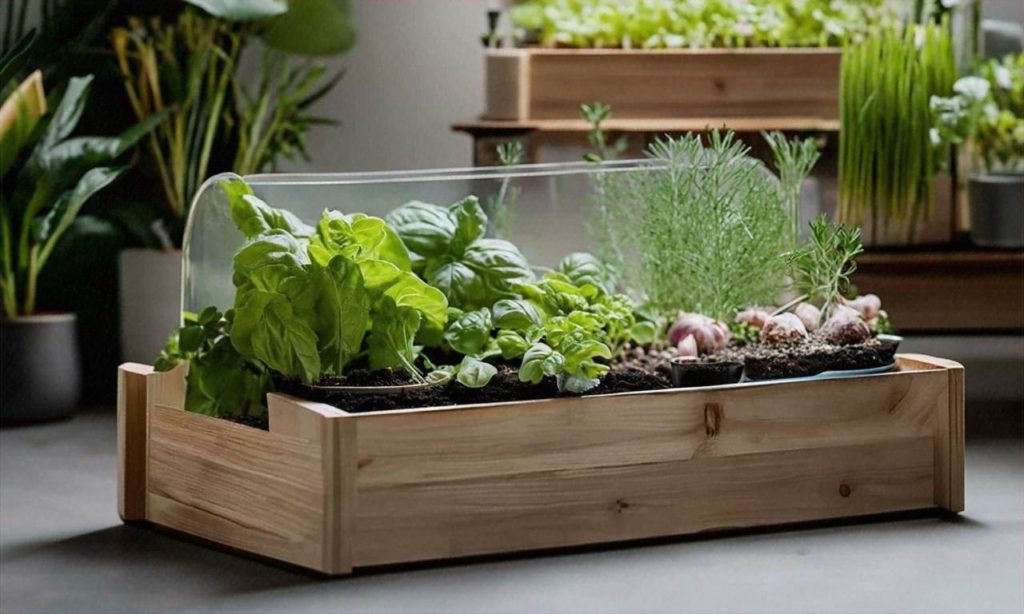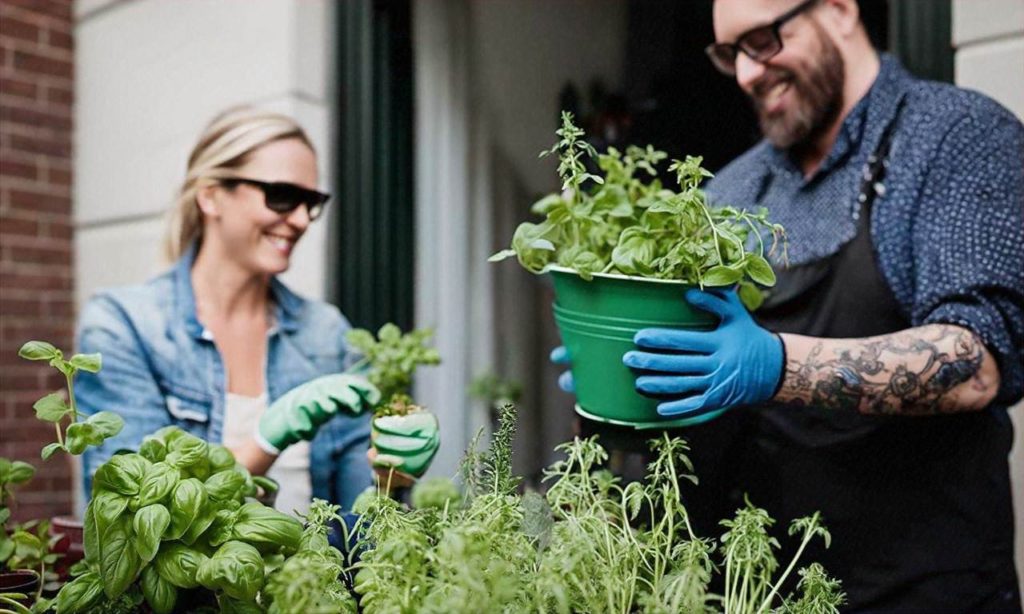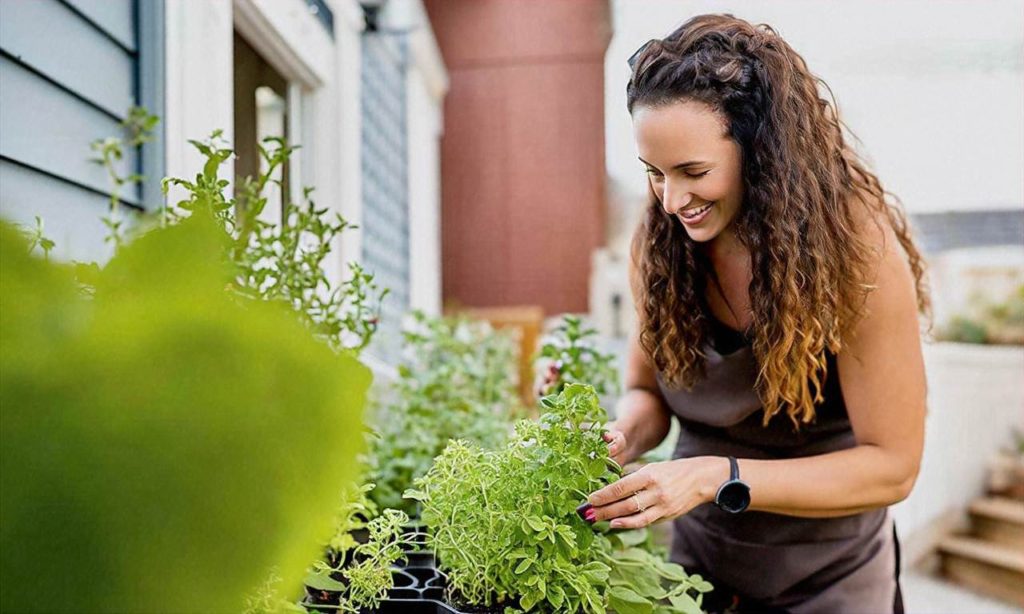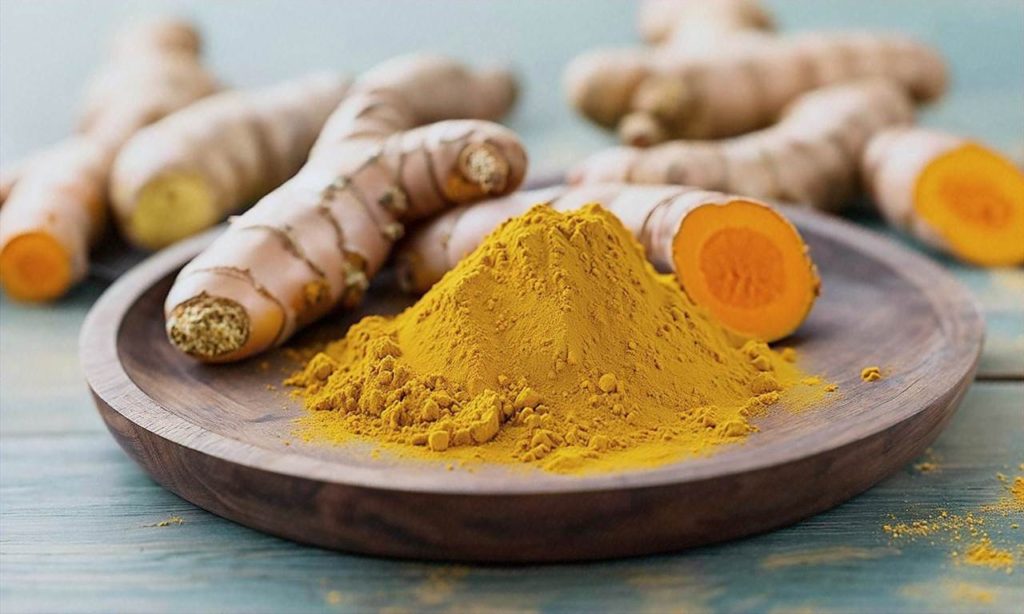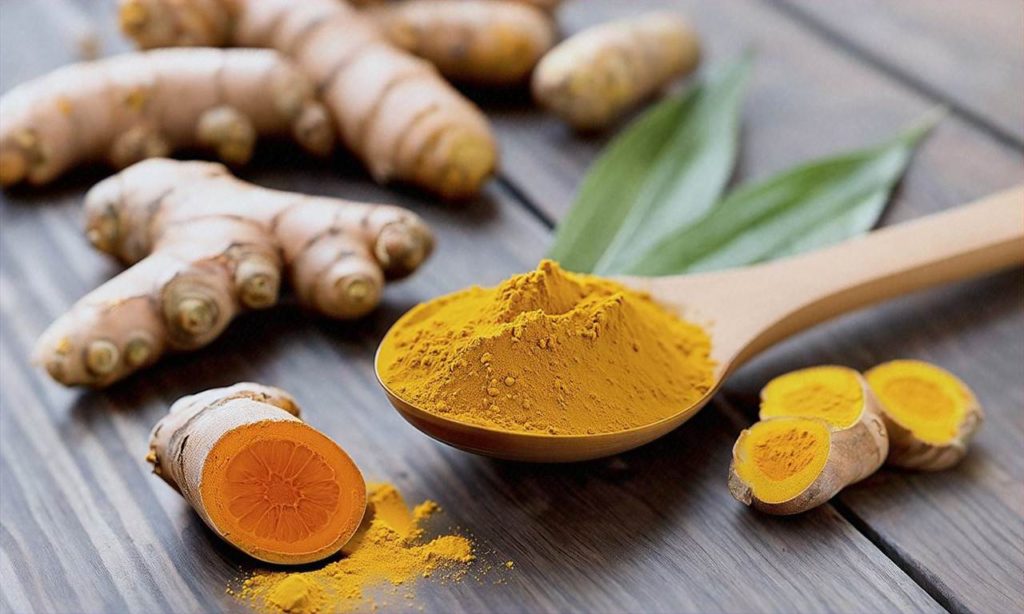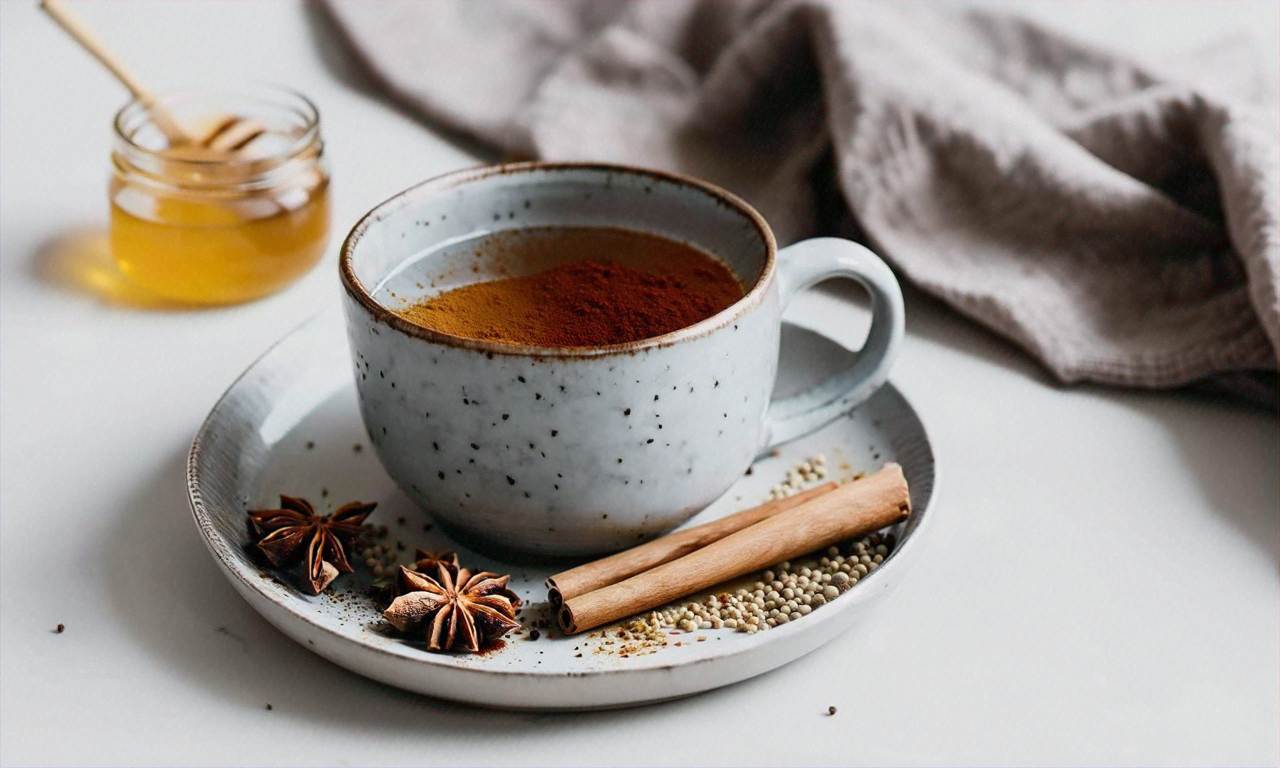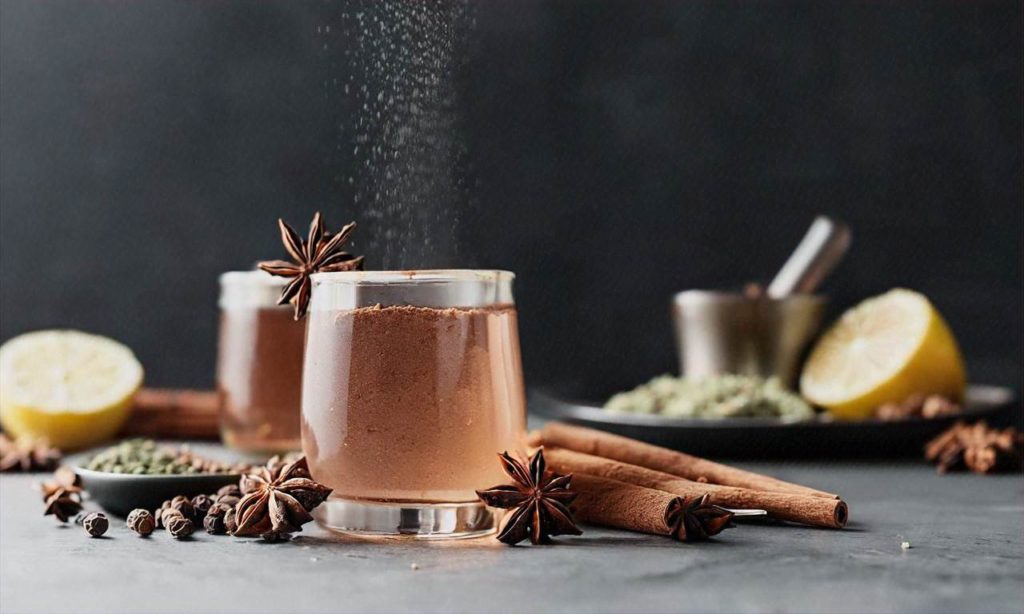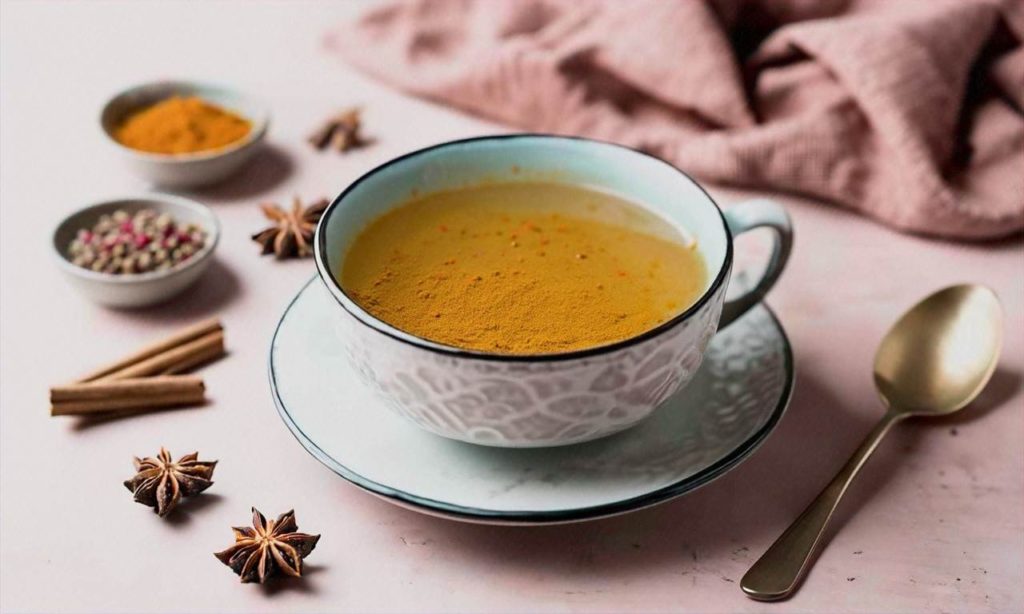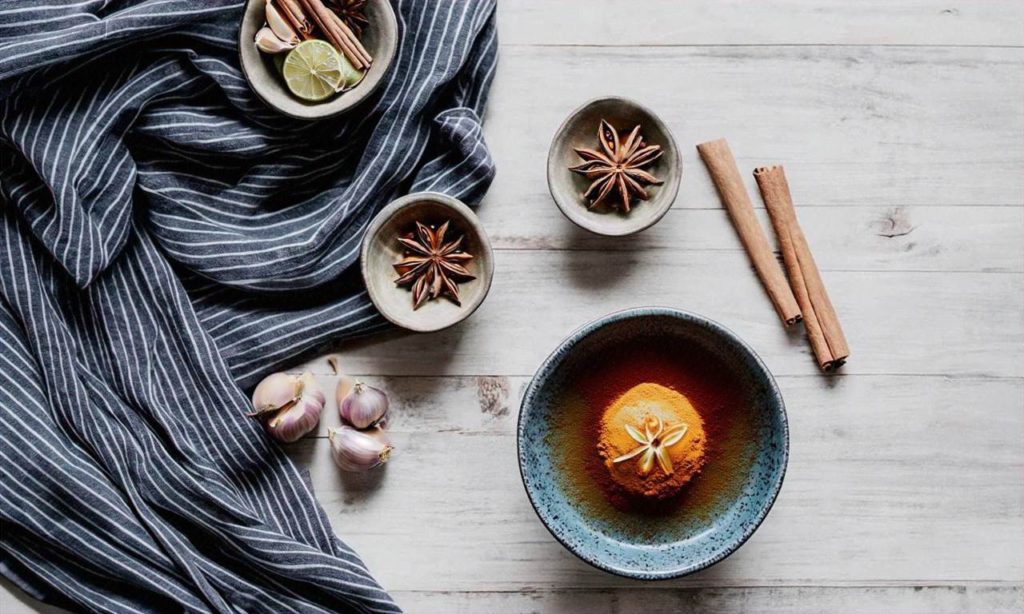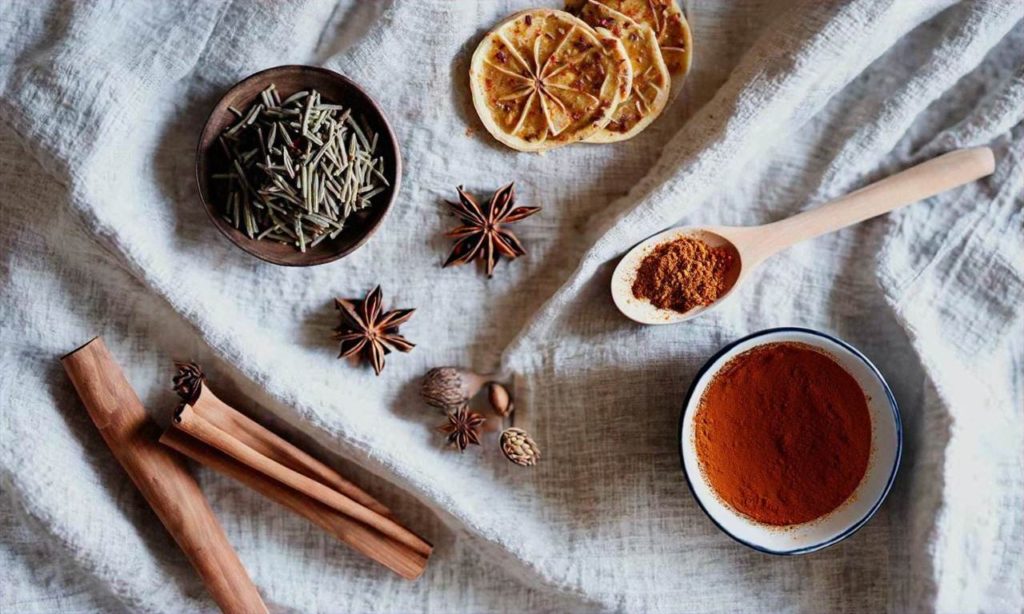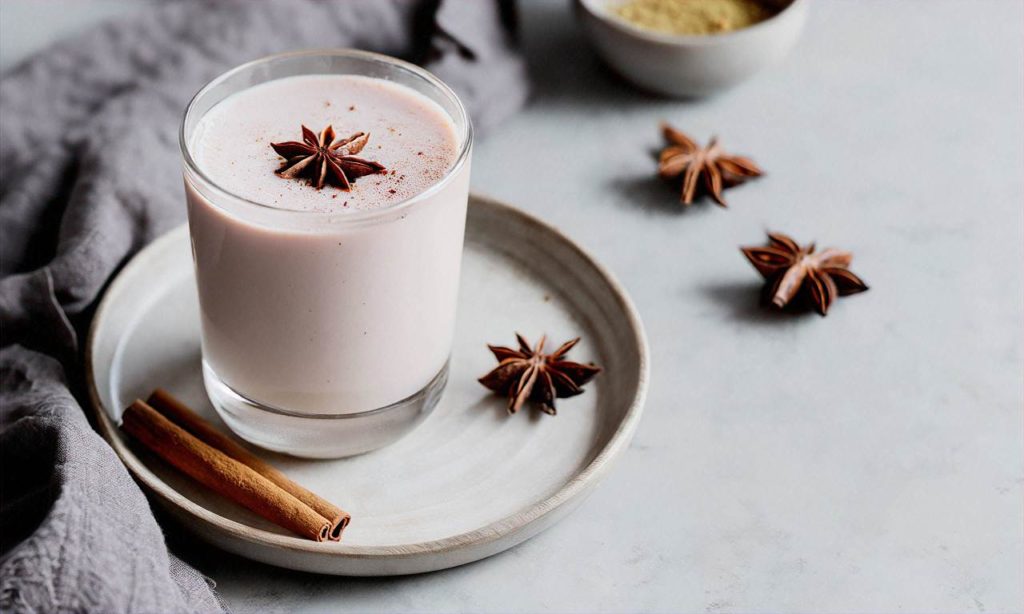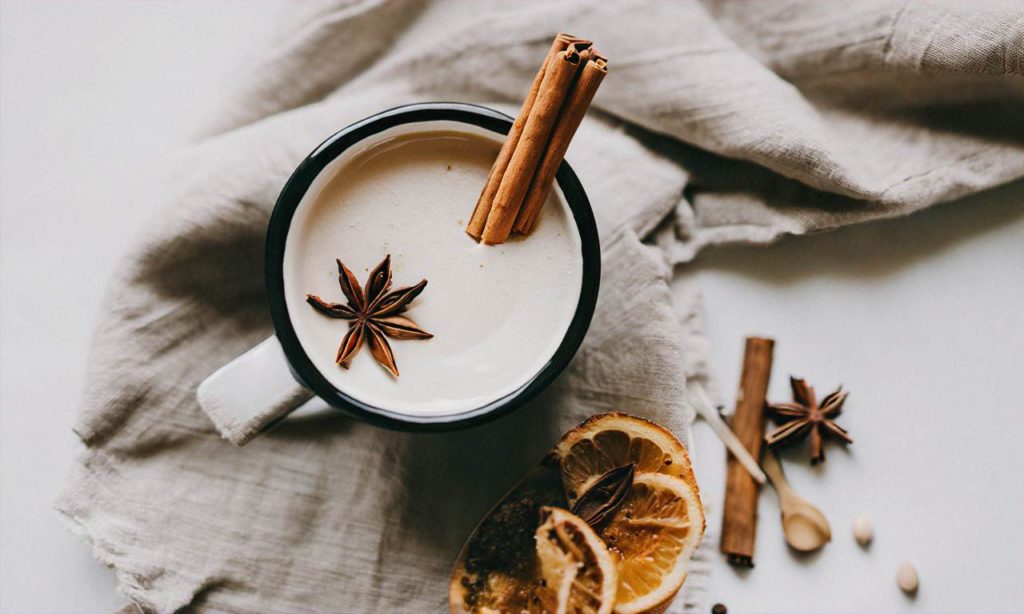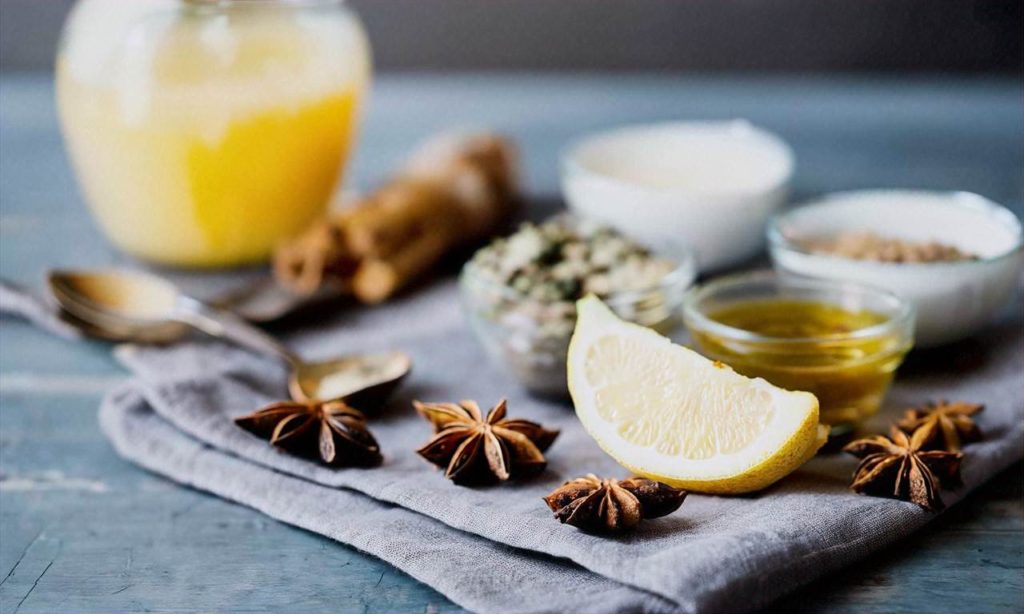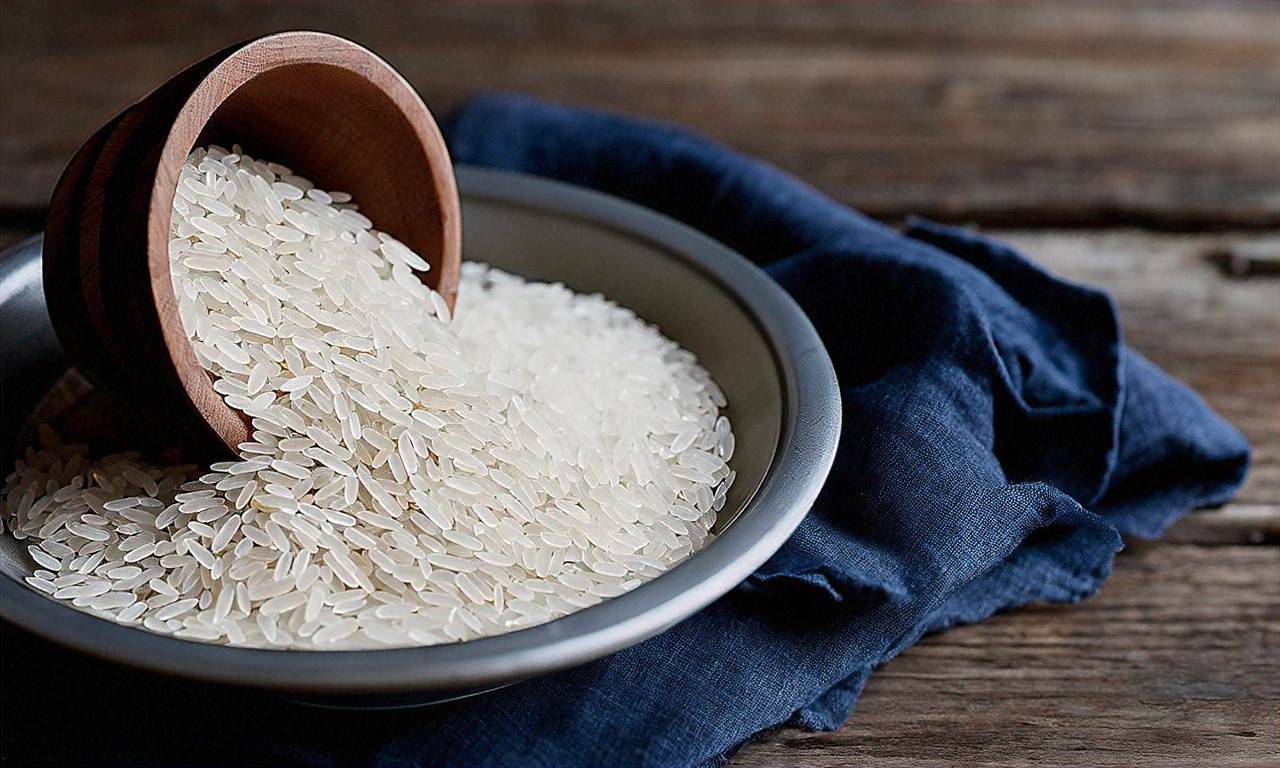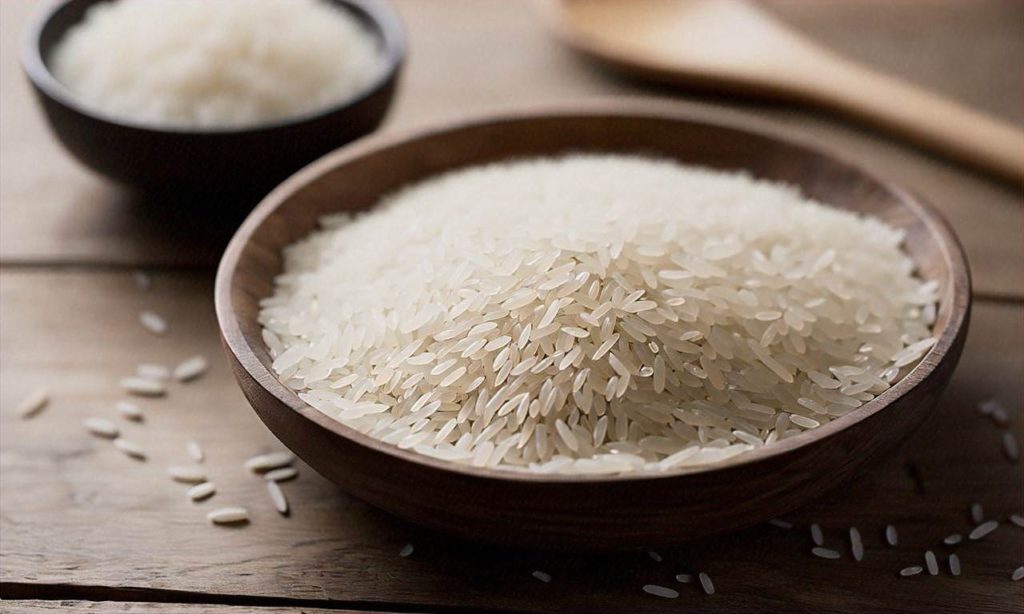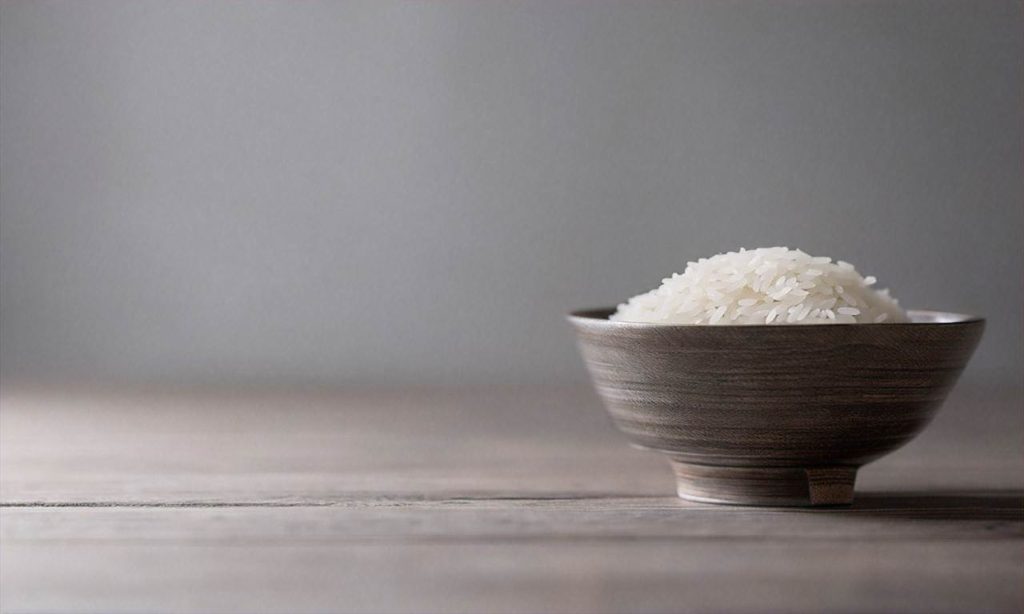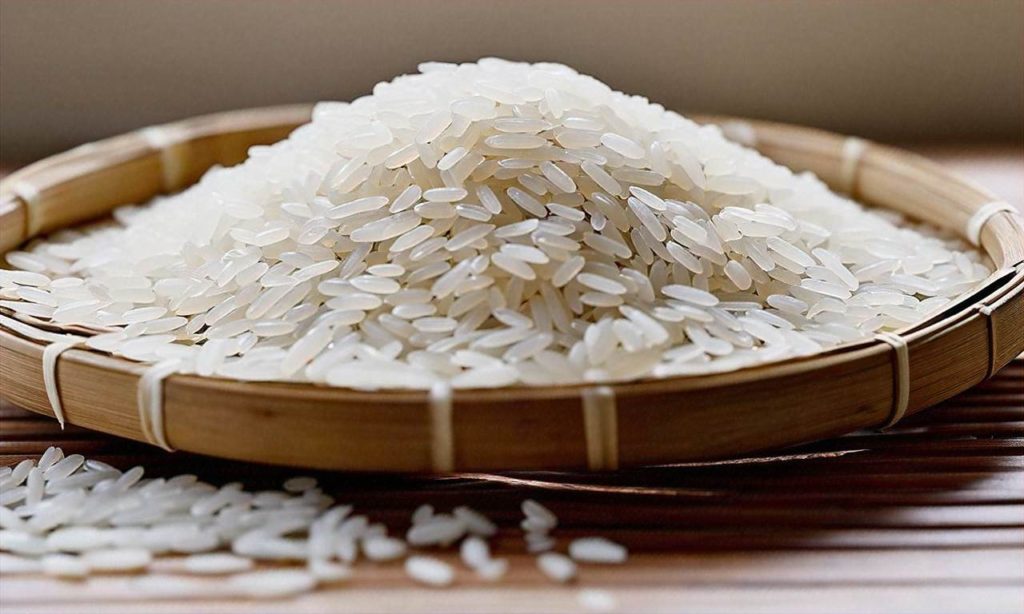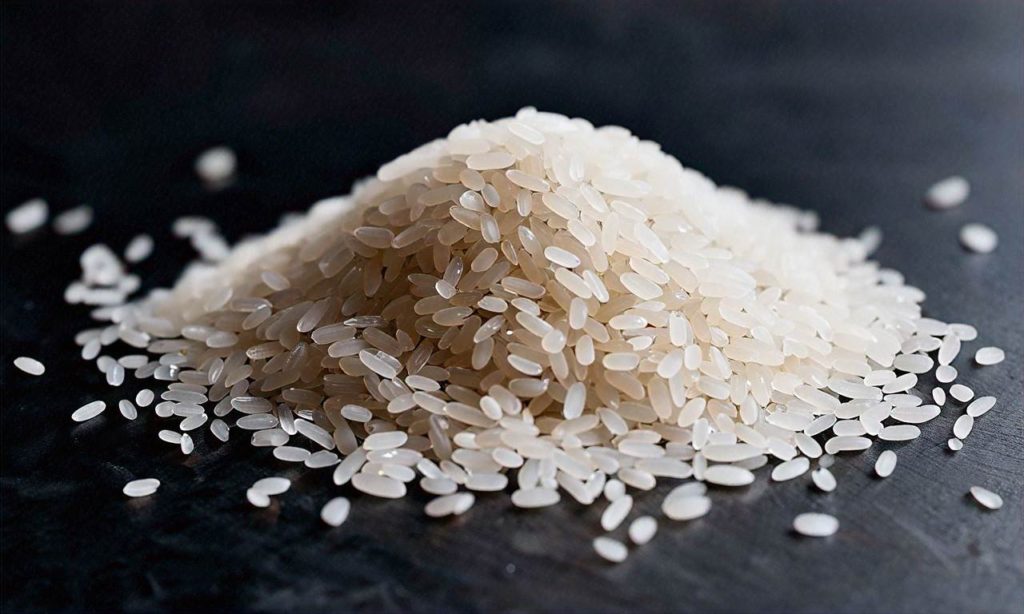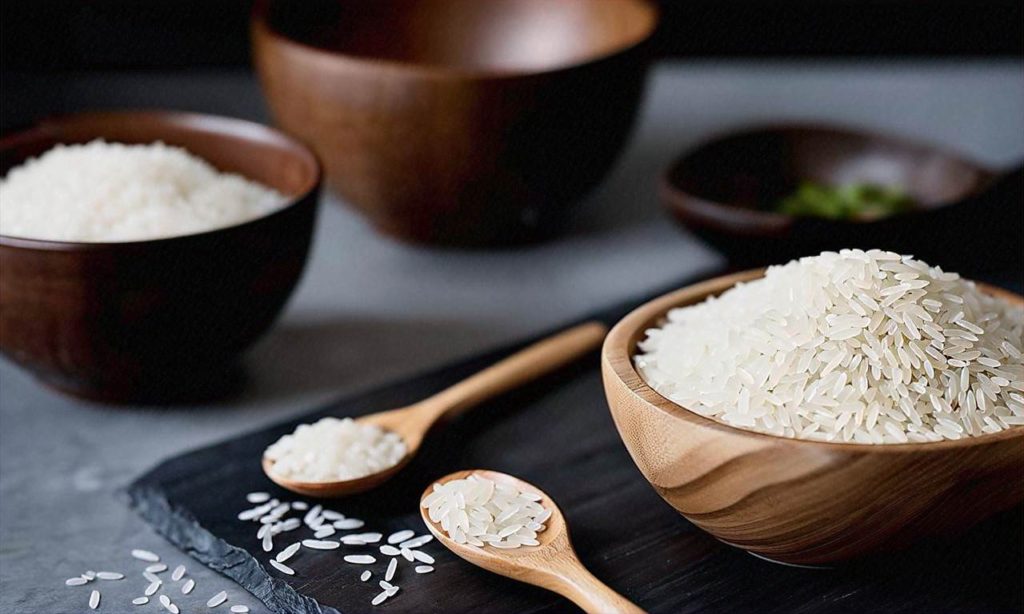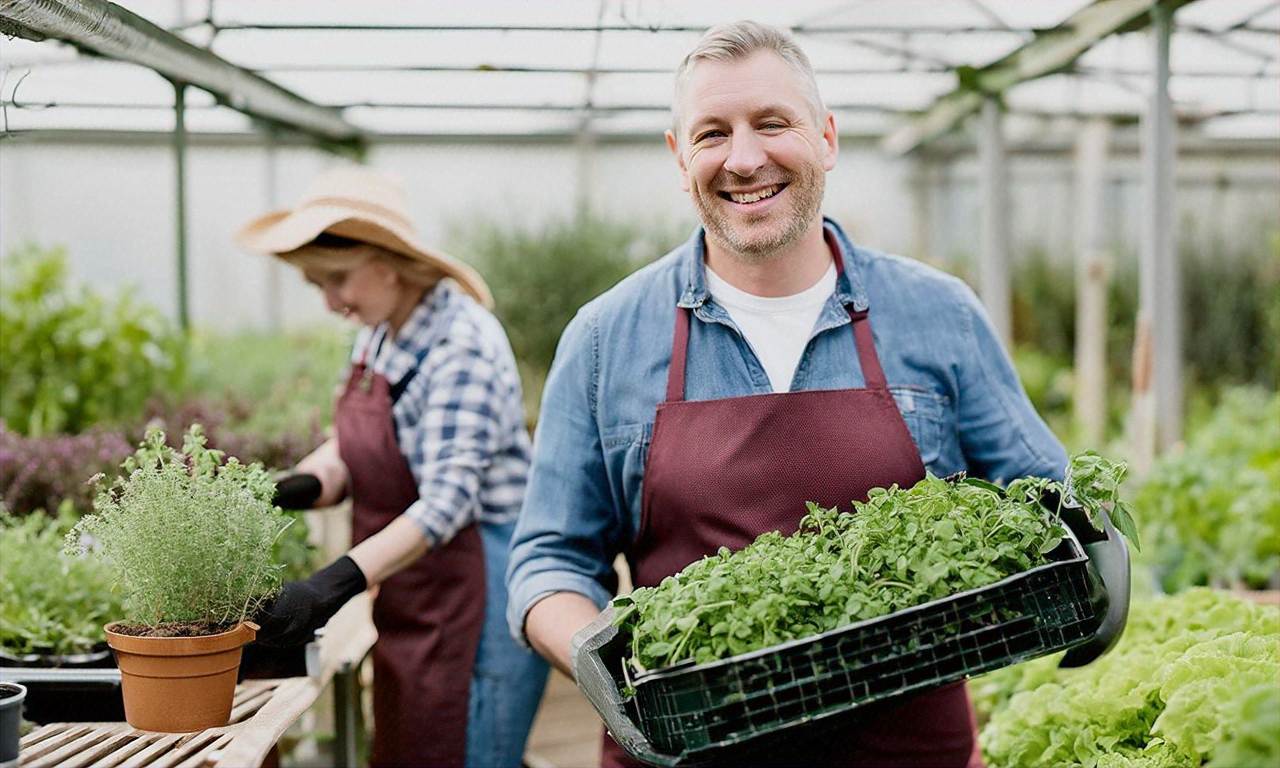Choose the Right Herbs
for Your Companion Plant Herb Garden
When creating the best companion plant herb garden, the first step is choosing the right herbs to grow. Carefully selecting herbs that will thrive in your climate and space will set your herb garden up for success. Consider sunlight, soil needs, and hardiness zones when deciding which herbs to plant alongside each other.
Selecting the right herbs for your companion plant herb garden starts with understanding your gardening zone and sunlight availability. Most culinary herbs grow best in zones 3-9 and need at least 6 hours of full sunlight per day. Knowing this, gardeners can choose herbs suited for their region. Some great companion herb options for a variety of zones include basil, parsley, cilantro, dill, garlic, and chives.
In addition to sunlight and climate, herb companion plants have preferences for soil drainage, moisture, and pH. Test your garden’s soil to determine which herbs make compatible companions. For example, oregano and lavender grow well in drier, alkaline soils. Meanwhile, cilantro and dill thrive in moist, acidic soils. Amending your garden soil to fit multiple herbs takes extra work. Selecting herbs with similar soil needs eliminates this chore.
Likewise, consider the mature size of your companion plant herb selections. Tall rosemary should not shade sun-loving, low-growing thyme. Be sure to give each herb enough space to grow. Also, factor in water and nutrient needs when planting companion herbs. Group plants with higher or lower water demands together. This way, the companion plants for your herb garden get even moisture and nutrients.
The right companion plant herb garden starts with researching individual herb needs. Compare sun, soil, climate, and size requirements when selecting herbs to plant together. Thoughtful planning allows each herb to thrive alongside its neighbors. With smart companion plant pairings, your herb garden will grow successfully. For specific recommendations on which herbs make the best companion plants in an herb garden, read on.
Companions for Basil
When planting basil, choosing the right companion plants is key to having a thriving and productive herb garden. The best companion plants for basil help repel pests, enhance flavor, and allow you to make the most of your garden space by planting complementary herbs together.
What to Plant with Basil
Sweet basil is one of the most popular culinary herbs, but it can be susceptible to pests like aphids and Japanese beetles. Luckily, there are lots of great companion plant options to help protect your basil. Some of the top companion plant choices for basil include:
– Tomatoes – Tomato plants and basil have a very symbiotic relationship. Basil helps enhance the flavor of tomatoes and repels pests like aphids, mosquitoes, and flies. Meanwhile, tomato plants help shade basil in hot summer weather.
– Oregano – Like basil, oregano is a staple herb in many pasta sauce, pizza, etc. recipes. When planted together, basil and oregano can deter aphids. Oregano also helps repel cabbage moths.
– Petunias – Petunias add bright pops of color to an herb garden while also repelling aphids, leafhoppers, beetles, and more. The bright flowers also attract beneficial pollinators.
– Marigolds – Marigolds have strong insect repellent properties and their roots emit a substance that kills nematodes in surrounding soil. This makes them a great protective border for basil.
– Peppers – Bell peppers and basil make perfect companions, enhancing the flavor of each other. Plus, peppers help shade basil plants once they grow larger.
– Chives – As fellow herbs, chives and basil simply belong together. Chives help deter aphids, one of the most common basil pests.
Optimal Growing Conditions for Basil Companion Plants
When planting basil with companion plants, make sure to choose varieties with similar sunlight, water and spacing needs. This will ensure all plants thrive. Here are some optimal growing tips:
– Sunlight – Most herbs, including basil, oregano, etc. need at least 6 hours of full sunlight per day. Choose companion plants accordingly.
– Water – Basil likes consistently moist (but not soggy) soil. Water companion plants 1-2 times a week depending on climate.
– Space – Give basil plants 12-15 inches of space all around. Allow tomatoes 18+ inches between plants.
By understanding the ideal conditions for basil and potential companion plants, you can design a garden that allows them to thrive side-by-side. This will lead to better harvests for both your basil and other herbs.
Creative Ways to Use Basil Companion Plants
One of the best parts of planting companion herbs like basil is finding fun new ways to use them together. Here are some suggestions:
– Make pesto with basil, oregano, garlic and olive oil. Toss with pasta or use as a sandwich condiment or dip.
– Create a fresh tomato basil salad with sliced tomatoes, mozzarella, basil leaves, balsamic vinegar and olive oil.
– Mix basil and tomatoes into omelets, frittatas or scrambles for a flavorful breakfast.
– Blend basil, tomatoes, peppers and onions into gazpacho soup. Garnish with fresh basil.
– Grill peppers and onions. Toss with basil, olive oil and balsamic for a simple side dish.
The possibilities are endless when you have multiple fresh companion herbs right outside your door. Get creative with recipes!
When designing your herb garden, be sure to include some great companion plants for your basil. By planting basil with tomatoes, oregano, petunias, marigolds, peppers or chives you can enhance flavors while keeping pests at bay. With optimal sunlight, water and spacing your basil will thrive alongside other herbs. And you’ll love finding tasty new recipe ideas with your homegrown companion plants.
Companions for Parsley
When planting your herb garden, it’s important to choose companion plants for parsley that will help it thrive. Parsley is a versatile culinary herb that is popular for its bright, fresh flavor. The best companion plants for parsley are those that enhance growth and deter pests.
Some great companion options for parsley include:
Tomatoes
Tomatoes make excellent parsley companion plants. Parsley helps tomatoes grow stronger by attracting predatory insects that prey on tomato pests. The parsley also masks the scent of the tomatoes, making it harder for pests to find them. In return, tomatoes shade parsley in the hot summer months, protecting it from excess sun exposure.
Asparagus
Asparagus makes a mutually beneficial parsley companion. Asparagus has ferny foliage that provides shade for parsley. The parsley repels the asparagus beetle, protecting the asparagus spears. Planting parsley and asparagus together results in a bountiful harvest for both vegetables.
Chives
Chives are pretty, edible herbs that do well planted near parsley. Their allium scent confuses pests and deters them from the parsley. The chives also provide living mulch and help retain soil moisture. Like parsley, chives need consistent watering, so they have similar growing needs.
Peppers
Peppers, especially hot varieties, make ideal parsley companion plants in an edible garden. The peppers’ spicy scent masks the parsley, protecting it from pests like carrot flies and cabbage worms. Parsley also enhances the flavor of peppers when planted nearby. Choose bell peppers, chili peppers, or hot peppers to plant with your parsley.
Carrots
Carrot flies dislike the smell of parsley’s foliage. Planting carrots and parsley together will deter the flies and protect your carrot crop. The lacy parsley leaves also provide shade for young carrot seedlings. Both parsley and carrots grow well in loamy, well-drained soil with consistent moisture.
Beans
Nitrogen-fixing beans enrich the soil with nutrients that benefit parsley. Bush beans and pole beans planted near parsley will improve your herb harvest. The beans also provide structural support for the parsley plants once they reach maturity. Certain beans can be trellised alongside parsley.
Lettuce
Parsley and lettuce are classic salad ingredients that do well planted together. The dill in parsley deters aphids, slugs, and other pests that may attack lettuce. Parsley’s shallow roots don’t compete much with lettuce for space and nutrients. Choose heat-tolerant lettuce varieties to grow alongside parsley through the summer.
Radishes
Parsley helps repel the flea beetles that can damage radish crops. It also may boost production of the pungent compounds that give radishes their signature flavor. Radishes have shallow roots, so they won’t compete with parsley below ground. Plant quick-growing radishes from seed two to four weeks before slower-growing parsley.
When planting companion plants for parsley in your herb garden, remember to provide all the herbs with well-drained, nutrient-rich soil and consistent moisture. Group them together densely to maximize the pest-repelling benefits. With the right companion plants, your parsley will stay healthy and abundant all season long.
Companions for Rosemary
When choosing companion plants for rosemary, it’s important to consider the best companion plants for your herb garden that will thrive alongside this aromatic herb. Rosemary thrives in hot, dry conditions and doesn’t require rich soil. Choosing plants with similar needs is key for happy and healthy rosemary companions.

Some great companion plant options for rosemary include:
Sage
Like rosemary, sage prefers drier conditions and average to poor soil. These Mediterranean herbs enjoy the same growing conditions, making them excellent companion plants for your herb garden. Planting sage near rosemary can also deter some common insect pests.
Lavender
Another herb that hails from Mediterranean regions, lavender does well with hot and dry growing conditions. Plant lavender near rosemary for beautiful contrasting colors and textures. Plus, lavender’s aromatic qualities can help repel deer and rabbits from your herb garden.
Thyme
Thyme makes a good companion for rosemary as their growing needs and preferences are very similar. Thyme enjoys hot sun exposure and dry conditions. Planting thyme near rosemary can help maximize space in your herb growing area.
Nasturtium
Adding nasturtium as a companion plant with rosemary offers multiple benefits. Nasturtiums deter aphids and other pests, helping to protect rosemary. Their trailing nature also makes a beautiful edging plant around rosemary. As an added bonus, nasturtium flowers and leaves are edible, adding pops of color to salads or as garnish.
Garlic and Chives
Onions, garlic, and chives make great companions for most herbs, including rosemary. These plants help deter pests like aphids, mites, and beetles through their pungent aromas. They require similar soil drainage and sunlight conditions, making them ideal rosemary partners.
When planting companion plants with rosemary, make sure to space them appropriately to allow air circulation and prevent overcrowding. For bushy herbs like rosemary, sage, and lavender, space plants 2-3 feet apart. For lower growing thyme and nasturtiums, allow 1-1 1/2 feet between plants.
Be sure to use organic fertilizers when enriching your herb garden soil, as rosemary prefers poor soil and excess nutrients can damage or kill the plants. Aged compost or manure works well. Water rosemary only when the soil is partly dry, as wet soil can lead to root rot. The best companion plants for your herb garden containing rosemary are those that thrive in hot, dry conditions and require minimal watering and feeding once established.
When designing your herb garden, consider incorporating rosemary’s preferred companion plants – like sage, thyme, lavender and chives – for optimal growth and pest protection. Referring frequently to the key points on the best companion plants for your herb garden when planning will set your rosemary and its neighboring herbs up for success.
Companions for Thyme
Thyme is a versatile culinary and ornamental herb that deserves a spot in any herb garden. When planted with the right companion plants, thyme grows especially well and helps neighboring plants thrive too. Read on to learn the best companion plants for thyme.
Choose Companion Plants That Deter Pests
Since thyme is susceptible to pests like spider mites, planting insect-repelling companions nearby can provide natural pest protection. Sage, garlic, onions, leeks, chives, and chamomile help repel many of the insects and mites that may bother thyme. Interplanting thyme with these pungent herbs creates an environment that confuses and deters pests.
Additionally, planting flowers like daisies, marigolds, and nasturtiums nearby can help control pests. These cheerful blossoms attract beneficial insects that prey on harmful garden pests. Positioning these flowers throughout the herb garden creates mini habitats for insects that keep pests away from vulnerable herbs like thyme.
Select Companions That Enhance Growth
Some plants have synergistic effects, actually boosting the growth and flavor of their neighbors. Oregano, marjoram, cilantro, and parsley are known to improve both the health and essential oil production when planted near thyme.
Additionally, lettuce and brassicas like cabbage, broccoli and Brussels sprouts thrive next to thyme. These vegetables appreciate the moisture retention and nutrient benefits of growing beside fragrant, herb companions.
Choose Companions with Complementary Needs
To help your thyme and companion plants easily coexist, choose companion species with similar sunlight and water requirements. Since thyme thrives in well-drained soil and at least six hours of sun, excellent companion choices include other drought-tolerant Mediterranean herbs like rosemary, sage, and oregano. Culinary favorites like parsley, chives, garlic, and onions also flourish alongside thyme without competing for resources.
Additionally, many ornamental flowers perfectly complement thyme’s growing conditions. Daisies, lavender, geraniums, yarrow, and nasturtiums are great choices that provide pest protection, attract pollinators, and enhance the beauty of the herb garden when planted as thyme companions.
Mind the Mint
While mint’s pest repelling qualities seem like a good match for thyme, avoid planting it together. Mint is highly invasive and can quickly overtake the garden, crowding out less aggressive plants like thyme. For this reason, it is best to plant mint by itself in containers or sections clearly separated from other herbs.

Get Creative with Companion Planting
When designing your herb garden companions, feel free to get creative with pairings! Observe how your plants grow together over time and adjust placements as needed each season. Discovering successful new plant allies through first-hand observation is one of the great joys of gardening.
No matter which herbs and flowers you choose, providing good soil, sunlight, and water for both thyme and its companion plants is key. Well cared for plants will be happy, healthy, and ready to reap for kitchen and garden. Follow these companion planting tips and your thyme will thrive beautifully this season!
Companions for Cilantro
When planting your herb garden, carefully choosing companion plants for cilantro can help the herb thrive. The best companion plants for your cilantro will enhance flavor, deter pests, and increase yields. This guide to companion planting for cilantro covers ideal plant pairings, spacing, and care for happy, healthy herbs.
What to Plant with Cilantro
Cilantro, also known as coriander, grows well when paired with certain vegetables, herbs, and flowers. Consider planting cilantro with:
Beans
Planting pole beans, bush beans, or soybeans near cilantro can provide needed shade for the lower-growing herb. The beans also stabilize cilantro plants and climbing vines don’t compete for nutrients. In return, cilantro may improve bean growth and flavor.
Sweet Alyssum
Sweet alyssum is a fragrant annual that deters aphids, a common cilantro pest. Its small white flowers also attract beneficial insects for natural pest control. Plus, alyssum is easy to grow from seed.
Dill
Dill and cilantro make excellent companions, enhancing the flavor of both herbs. Tall dill provides needed shade and its flowers attract beneficial predatory wasps and flies.
Chamomile
The pretty, daisy-like flowers of chamomile shelter small cilantro seedlings. Chamomile also deters flying pests and improves essential oil production and flavor in cilantro.
Peppers
Most varieties of sweet or hot peppers thrive when planted near cilantro. Peppers benefit from the shade of cilantro’s flat leaves, improving fruit set.
Tomatoes
Tomatoes and cilantro are complementary garden companions. As a nutrient accumulator, cilantro may boost tomato growth and flavor by increasing terpene content.
Carrots
Plant carrots close to cilantro for mutual pest protection. Carrots mask the scent of cilantro to carrot flies. Cilantro also deters the leaf blight that affects carrots.
Onions and Garlic
Onions and garlic make great cilantro companion plants, masking the scent of the herb from pests. Plus, onion family plants deter aphids and carrot root flies.
Marigolds
Marigolds are one of the best companion plants for cilantro. Their pungent scent deters aphids, whiteflies, slugs, and other cilantro pests. Marigolds also attract beneficial insects.
Nasturtium
With its bright edible flowers, nasturtium is an attractive cilantro companion. It deters aphids and other pests while attracting pollinators. Trailing varieties also provide needed shade.
Spacing Cilantro Companion Plants
When planting cilantro companions like dill and peppers, allow 8-12 inches between plants. For bush beans, marigolds, and other small companions, leave 4-6 inches. Quick-growing nasturtiums and sweet alyssum only need 2-3 inches. This proper spacing prevents overcrowding and allows air circulation. It also reduces pest and disease problems.
Caring for Cilantro Companion Plants
Grouping complementary herbs, flowers, and vegetables together makes caring for your cilantro companions easy. Here are some organic care tips:
Water cilantro and its companions regularly with an inch of water per week. Provide more during hot, dry periods.
Feed every 2-3 weeks with a balanced organic fertilizer to fuel plant growth.
Mulch around plants to suppress weeds, retain moisture, and keep roots cool.
Check frequently for pests like aphids, snails, or whiteflies. Remove by hand or use organic insecticidal soap.

Pinch off flowers to prolong leaf production in cilantro and its companions.
Harvest cilantro often by cutting stems about one inch above the soil. Frequent cutting encourages regrowth.
The Best Companion Plants for Cilantro
By interplanting cilantro with beneficial friends like dill, marigolds, and bush beans, you can fill your garden with bountiful herbs and vegetables. Companion planting not only results in better growth, but enhances the flavor of cilantro and deters common pests. With the right companion plants, your cilantro will thrive!
Companions for Mint
Mint is a versatile herb that can be used in desserts, beverages, savory dishes, and more. But did you know that planting mint next to certain other plants in your herb garden can benefit both the mint and its companions?
Choosing the best companion plants for mint will enhance the growth and flavor of your mint, while also helping to maximize the space, nutrients, and beneficial qualities of your overall herb garden.
Some excellent companion plant options for mint include:
Companion Plants to Enhance Mint Growth
Many gardeners find that pairing mint with nitrogen-fixing plants leads to better mint growth and flavor. Nitrogen-fixers like beans, peas, and clover can boost the available nitrogen around mint roots. Good nitrogen-fixing companion plants for mint include:
– Bush beans
– Pole beans
– Peas
– White clover
– Alfalfa
These plants have a symbiotic relationship with soil bacteria that convert atmospheric nitrogen into a usable form that plants can absorb through their roots. Having them nearby gives your mint an extra nitrogen boost.
Companion Plants to Deter Mint Invasiveness
Mint spreads aggressively through underground rhizomes and can quickly take over an herb garden if left unchecked. Interplanting mint with certain aggressive plants can help curb mint’s spreading habits. Useful companion plants to limit mint invasiveness include:
– Lemon balm
– Chives
– Garlic chives
– Onions
– Shallots
These bulbs and herbs will compete with mint for space and nutrients, keeping its growth more contained. The onion family, in particular, seems quite effective at stunting mint’s spread.
Companion Plants to Enhance Flavor
Some plants form especially tasty flavor combinations when planted near mint. Choosing the right companions can bring out the best in both your mint and other herbs. Delicious companion plant flavors for mint include:
– Chocolate mint + Strawberries: These two plants complement each other perfectly in desserts and summer drinks when grown side-by-side.

– Spearmint + Peas and beans: Spearmint’s bright flavor pairs beautifully with fresh peas and green beans. Plant them together for easy seasonings.
– Peppermint + Chamomile: The clean flavors of peppermint and chamomile tea combine into a soothing, fragrant cup when the plants grow alongside each other.
– Apple mint + Thyme: Apple mint’s fruity notes mesh well with thyme’s woodsy taste. Use them together when cooking fruit dishes.
– Orange mint + Citrus trees: The dynamic citrus flavors of orange mint and lemons, limes, or oranges make these great companion plants.
Companion Plants to Repel Pests
Some plants naturally deter certain insect pests, which can benefit more vulnerable herbs like mint. Useful insect-repelling companion plants for mint include:
– Marigolds: These bright flowers repel aphids, squash bugs, nematodes and other garden pests.
– Garlic and chives: The allium scent of these plants drives away aphids and carrot flies.
– Petunias: These pretty flowers help repel a range of pests like asparagus beetles, leafhoppers and tomato worms.
Interplanting mint with these companions allows the mint to grow pest-free and remain healthy all season long.
Tips for Planting Mint Companions
When pairing mint with companion plants in your herb garden, keep these tips in mind:
– Give mint plenty of room by situating companion plants at least 12 inches away from mint. This prevents the mint’s vigorous roots from taking over.
– Plant mint and its companions in separate containers or raised garden beds to restrict mint’s spread. Sink containers in the soil to allow plant roots to intermingle.
– Water mint regularly to prevent it from invading other plants’ space in search of moisture. Mint prefers consistently damp (but not soggy) soil.
– Remove mint flowers before they set seed, as seeds can lead to unwanted mint sprouts around the garden. Clip flowers regularly.
– Prune back mint often to direct energy to the leaves rather than outward spread. Don’t compost pruned mint material, as it may re-root.
With the right companion plants, your mint will thrive beautifully alongside other herbs in your garden!
Companions for Dill
When choosing companion plants for dill in your herb garden, consider pairing it with plants that can benefit from its strong scent, deter pests, or provide shade and support. Some great options include:
Lettuce and Other Leafy Greens
Leafy greens like lettuce, kale, spinach, and Swiss chard make excellent companions for dill. As shallow-rooted plants, they don’t compete much for nutrients. Dill provides shade that helps keep soil moist for the more delicate greens. The dill’s strong scent also helps mask the greens, protecting them from pests like aphids and cabbage loopers. For best results, interplant dill seeds throughout your lettuce and greens beds.
Cucumbers
Cucumbers and dill are a match made in heaven. As vining plants, cucumbers benefit from the vertical structure dill’s ferny foliage provides. Twine the cucumber vines through dill plants to save space and support their growth. Dill flowers also attract pollinators like bees to cucumber blossoms, improving fruit set. The cucumber’s sprawling shade cools dill roots as well. For maximum cucumber yield with your companion dill, sow dill seeds every 1-2 feet along the edges of cucumber mounds or rows.
Onions and Chives
Onions, chives, and other alliums make great companions for dill in an herb garden. With their shallow root systems, alliums don’t compete much for soil nutrients and moisture. Alliums’ strong scents also help mask and protect more delicate dill from pests. Interplant dill throughout allium beds for these benefits. Just be sure to space allium bulbs 8-12 inches away from dill so their roots have enough room.
Asparagus
Asparagus benefits from having dill as a companion in several ways. Ferny dill foliage helps shelter emerging asparagus spears in spring, protecting them from snapping in wind or getting damaged. Dill’s flowers also attract beneficial predatory wasps that eat asparagus beetle larvae. Over time, the long dill taproot helps break up and aerate soil, benefitting asparagus roots. For best results, scatter dill seeds along the asparagus bed edges and between rows.
Carrots
Carrots and dill make great garden companions as well. As long-rooted plants, they occupy different soil zones and don’t compete much for space or nutrients. Carrots enjoy the shade and moisture retention dill’s ferny foliage provides. Dill’s strong scent also helps mask carrots from pests like carrot flies. For maximum benefits, sow dill seeds 1-2 feet apart along the edges of carrot rows or interspersed throughout the beds.
Best Practices for Planting Dill
When incorporating dill as a companion plant in your herb garden, keep these best practices in mind:
– Sow dill seeds directly in the garden 2-3 weeks before your last expected frost date. Dill doesn’t transplant well.
– Space dill plants 8-12 inches apart in rows or beds to allow room for growth. They can reach 3-5 feet tall when mature.
– Place taller dill plants towards the back or middle of garden beds so they don’t shade other plants too much.
– Grow several successive crops of quick-growing dill to provide flowers for beneficial insects through the whole growing season.
– Cut dill often for culinary use to encourage more branching. More branches equal more flowers to support companion plants.
– Allow some dill plants to go to seed at season’s end. Then sprinkle these seeds throughout garden beds in fall to sprout more companion dill the following spring.
When planted with care and proper spacing as a companion, dill is invaluable for deterring pests, attracting pollinators, retaining moisture, and supporting growth for many vegetables, herbs, and flowers in an organic garden. The ideal companions take advantage of dill’s unique offering while giving something back in return. With mindful design, dill’s companionship in the garden can help every plant thrive.
Companions for Sage
When choosing companion plants for sage in your herb garden, it’s important to pick varieties that will help each other thrive. The right companion plants can attract beneficial insects, repel pests, improve flavor, and allow you to make the most of your garden space. This article on the best companion plants for your herb garden will explore some of the top options for pairing with sage.

Sage is an extremely versatile culinary herb that has been grown for centuries for its savory, slightly peppery flavor and aroma. Its silver-green leaves can be used fresh or dried in a wide variety of dishes, especially foods like pork, beans, and stuffing. In addition to being delicious, sage also has a long history of medicinal uses.
When planting sage, choose a spot with well-drained soil and plenty of sunlight. Sage thrives in hot, dry conditions. Good companion plants for sage will share similar needs for sunlight and soil drainage.
Some of the best companion plant matches for sage include:
Rosemary
Like sage, rosemary prefers hot, dry spots in the garden. These two Mediterranean herbs enjoy the same growing conditions, making them ideal companions. Planting them side by side can help improve the flavor of both herbs. Rosemary’s flowers also attract beneficial insects that will help keep pests away from sage.

Beans
Beans and sage make great companion plants in the garden. Beans help add nitrogen to the soil through a natural process called nitrogen fixation, which benefits sage and many other plants growing nearby. Sage is also thought to repel some bean beetles and other potentially harmful insects, helping to protect the bean plants.
Cabbages & Brassicas
The cabbage family can be prone to insect pests like cabbage moths and aphids. Fortunately, sage planted near brassicas like cabbage, broccoli and Brussels sprouts can help deter many of these unwanted insects. Sage brings insect-repelling qualities, while the cabbage family offers the soil nutrient benefits.
Carrots
Planting carrots near sage may help mask the scent of the carrot plants, preventing carrot flies from detecting and laying eggs on them. The carrots also have lush foliage that provides shade for sage roots. This pairing helps camouflage and protect both vegetables.
Tomatoes
As with many other herbs, sage can have a beneficial relationship with tomatoes. Sage repels insects and potentially harmful fungi, while tomatoes planted in close proximity improve the essential oil content and flavor of the sage. This makes sage even more aromatic and delicious to use in recipes.
Peppers
There are mixed reports on the companion abilities of sage and peppers. Some gardeners have found that sage helps peppers grow better, produce higher yields and have a sweeter flavor. Others note that sage stunts pepper growth. More research is needed, but these two plants may be worth trying together depending on your climate and soil.
In addition to pairing well with multiple vegetable plants, sage also grows well near other herbs like parsley, chamomile, lavender and chives. Each combination of herbs offers its own benefits in terms of insect protection, nutrient needs and flavor.
When planting your sage companion plants, make sure to leave 12-18 inches between young sage seedlings and other plants. You can plant seeds or starter plants for companion plants at the same time as your sage. As the plants grow and fill out through the season, they will create a beautiful and productive herb garden that takes advantage of their symbiotic relationships.
No matter which companions you choose, providing sage and its neighbor plants with proper growing conditions is key. Make sure your herb garden receives at least 6 hours of sunlight daily and has soil that drains well after watering and rain. Space plants far enough apart to allow air circulation between them. Water when the top few inches become dry, and fertilize lightly with compost or organic fertilizers a couple times per growing season.
With some thoughtfully selected sage companion plants and proper care, you’ll have a thriving herb garden that yields delicious, home-grown flavor all season long. The aromatic sage combined with its compatible companion plants can create a beautiful, bountiful and sustainable garden space.
Companions for Chives
Chives are a versatile herb that can be used to flavor anything from eggs and potatoes to salads, soups, and fish. Their mild onion-garlic flavor also makes them a tasty garnish. When planting chives in your herb garden, consider companion planting to help your chives – and their neighbors – thrive. The best companion plants for chives can help maximize your herb harvest through beneficial relationships.
Choose Companion Plants That Deter Pests
Certain plants make good companions for chives because they help deter insect pests and diseases. For example, planting chives near carrots can help mask the scent of carrot flies, reducing pest damage. Other plants like parsley, sage, rosemary, and thyme may also help repel potentially harmful insects. The aromatic qualities of these herbs mask the scent of chives and other plants, making it harder for pests to find their intended hosts.
You can also interplant chives with vegetables like tomatoes, peppers, and asparagus. The sulfur compounds in chives may fend off pests like aphids, spider mites, Japanese beetles, and cabbage worms. Planting the right companion plants is an organic way to protect your chives and other herbs from insects and diseases.
Consider Companion Plants That Enhance Growth
In addition to pest-fighting properties, some plants can improve the growth and quality of nearby vegetation. For example, planting chives near plants like strawberries may enhance their development and flavor. The flowers of chives also attract beneficial pollinating insects like bees, supporting fruit formation. Other plants that grow well with chives include beets, Brassicas, carrots, leeks, spinach, and bush beans. Think about your chive companions’ growth periods to make the most of companion planting. You want to maximize cooperation, not competition, for nutrients, water, light and pollinators.
Aim for Companion Planting Diversity
Planting chives with a diverse mix of herbs, flowers, and vegetables can strengthen your garden ecosystem as a whole. Companion planting guides often recommend popular herbs like parsley, cilantro, dill, basil and oregano as beneficial partners for chives. But don’t neglect ornamental flowers! Pairing chives with attractive blooms like marigolds, cosmos, zinnias, or nasturtiums can be mutually beneficial while also creating a beautiful pot or garden bed.
A diverse companion planting scheme can also improve soil structure and nutrient availability over time. The roots of various plants work on different soil layers. And as plant materials decompose, this organic matter enriches the earth. It’s nature’s way of nourishing itself! For the most robust garden possible, plant chives alongside a wide variety of herbs, flowers and vegetables. Monitor what grows well together in your climate and conditions, and adjust future companion plantings accordingly.
Companion Planting Tips and Tricks
To make the most of companion gardening with chives, keep these tips in mind:
– When planting seeds or starter plants for your chive companions, check expected mature size to avoid overcrowding. Leave enough room for growth.
– Pay attention to sun requirements for each plant species. Choose site locations and positioning within beds accordingly.
– Amend soil with aged compost or organic fertilizer prior to planting any seeds or transplants. This gives all plants the best start possible.
– Use trellising, stakes, cages and garden arches as needed to support climbing companions like beans, cucumbers and peas.
– Apply mulch around plants to regulate soil temperature and moisture while suppressing weeds. Recommended mulches include wood chips, leaf mold and grass clippings.
– Group plants with similar water needs in the same bed or section of your garden to simplify irrigation.
– When harvesting chives, cut no more than one third of the grassy leaves at a time. This allows the plant to continue growing strongly.
The best companion plants for chives are those that enhance flavor and growth for the entire garden through symbiotic relationships. With some thoughtful pairing guided by companion gardening principles, your chives and their “friends” will thrive beautifully!
Companions for Lavender
When choosing companion plants for lavender in your herb garden, consider aromatics, colors, height, and flowering time. Lavender’s divine fragrance combines beautifully with other herbs and flowers. Not only does it repel pests, but lavender also attracts bees, butterflies, and hummingbirds. Plant lavender near entryways or paths so you brush against it and release its lovely scent.
Lavender grows 1-3 feet tall and 1-2 feet wide. It thrives in sunny spots with well-drained soil. Space lavender plants 1-3 feet apart depending on variety. Trim lavender in early spring to promote bushy, compact growth. Prune again after flowering to prevent plants from becoming woody. Mulch lavender in cold climates to protect roots from winter damage.
Excellent companion plants for lavender include:
Roses
Pair lavender with roses in a formal knot garden or casual cottage garden. Interplant lavender and roses in mixed borders. Lavender repels aphids and other pests that bother roses. Both plants attract pollinators and bloom at the same time for a beautiful summer display.
Sages
The silver foliage and spiky purple flowers of lavender complement bushy green garden sages like Berggarten, Purple, and Tricolor. Culinary sage also combines well with lavender. Sages thrive in hot, sunny spots with well-drained soil like lavender. Plus sages repel cabbage moths.
Thyme
Upright lavender plants highlight the spreading nature of lemon, orange, caraway and creeping thymes. Both herbs thrive in hot sunny areas with sandy soil. Thyme masks the open base of lavender plants while attracting bees. For best results, plant mounding French lavenders with low-growing thyme varieties.
Chamomile
The daisy-like flowers of Roman chamomile brighten shady spots under tall lavender varieties. Both herbs thrive in average to poor soil. Not only is chamomile a living mulch and ground cover for lavender, but it also improves flavor and essential oil quality.
Marigolds
Marigolds deter asparagus beetles, nematodes, tomato hornworms, aphids, squash bugs, and whiteflies. Their bright orange, yellow, or red blossoms beautify borders planted with purple lavender. Choose compact French or signet marigolds for edging lavender. Scatter tall African marigolds behind lavender plants. Both marigolds and lavender thrive in full sun and well-drained soil.
Zinnias
Butterflies, bees, and hummingbirds flock to bright zinnias and fragrant lavender flowers. These colorful annuals bloom continuously from early summer until fall frost. Low-growing varieties make excellent edging plants for lavender. Taller zinnias combine nicely with lavender in cottage gardens, borders, and containers. Zinnias tolerate heat, drought, and poor soils.
Sunflowers
Cheery sunflower flowers provide vertical contrast to horizontal lavender bushes. Miniature sunflowers like ‘Elf’ work well as edging plants. Medium-sized varieties such as ‘Moulin Rouge’ make excellent backdrop plants. Pair spreading lavenders with towering mammoth sunflowers. Sunflowers improve soil by accumulating nutrients from deep in the ground. They also attract pollinators.
When designing your herb garden, remember to include fragrant, colorful companion plants for your lavender. Not only will these plants help lavender grow better, but they’ll also attract pollinators while repelling common garden pests. For the highest quality essential oils, always plant English lavender varieties together in full sun locations with sandy, alkaline soil. Avoid fertilizing lavender since this reduces oil production. Water young lavender plants to establish deep roots, then water minimally for hardest growth. Trust The Best Companion Plants for Your Herb Garden to help you grow abundant lavender for culinary and craft uses in your garden.
Companions for Garlic
Garlic is a versatile culinary herb that adds flavor to many savory dishes. But did you know that when planted near certain other plants, garlic can also help improve their growth? Choosing the right companion plants for garlic can be beneficial for your whole herb garden.
Garlic is known to deter pests, including aphids, Japanese beetles, and spider mites. It also repels rabbits and deer. Planting garlic next to plants susceptible to these pests, especially leafy greens like lettuce, kale, spinach, and chard, can help protect them. The strong scent of garlic masks the scent trails that pests use to find host plants. Research also shows that garlic may induce pest confusion or have antibiotic effects on nearby plants.
Some of the best companion plant options to grow near garlic include:
Tomatoes – Garlic is an excellent companion for tomatoes. The pungent odor of garlic helps repel red spider mites, aphids, Japanese beetles, and other pests that can damage tomato plants. Garlic may also help prevent late blight in tomatoes. Choose indeterminate tomato varieties, which continue growing taller throughout the season, to allow enough space for both plants.
Peppers – Planting peppers next to garlic can deter aphids, spider mites, thrips, cabbage worms, squash bugs, and flea beetles. The two plants may also enhance each other’s growth and flavor. Select peppers that don’t spread too wide to avoid crowding the garlic.
Lettuce and Leafy Greens – The antibiotic effects and pest-repelling abilities of garlic make it an ideal companion to protect lettuce, kale, chard, spinach, and other leafy greens prone to pests. These quick-growing greens also won’t compete for nutrients with slower-growing garlic plants.
Chamomile – With its daisy-like flowers and soothing fragrance, chamomile makes a beautiful and beneficial companion for garlic. Chamomile attracts hoverflies and other predatory insects that prey on aphids, protecting nearby garlic plants. It’s also thought to enhance essential oil production.
Onions – Closely related to garlic, onions make great companions as they have complementary growth habits and help repel some of the same pests like aphids, slugs, and cabbage worms. Planting green onions around garlic can also help mark where garlic bulbs are located.
When planting garlic next to other herbs and vegetables, be sure to space the plants properly to avoid overcrowding as they grow. Most companion plants should be spaced at least 8-12 inches away from garlic plants. Taller tomato varieties may need more room. Water and fertilize garlic and its companion plants as needed for your soil type, adjusting for the needs of each plant.
Growing garlic alongside helpful companion plants allows you to protect and enhance your herb garden naturally. By repelling pests, attracting beneficial insects, and potentially boosting essential oil production, companion plants create an environment where garlic and other herbs can truly thrive. As you plan and care for your herb garden, consider adding one or more of these beneficial companions next to your garlic this season.
Companions for Oregano
Oregano is a very popular culinary herb that is easy to grow and has many companion planting options. When planting oregano in your herb garden, consider pairing it with plants that enhance its growth and flavor. Some of the best companion plants for oregano include:
Tomatoes
Tomatoes make great companions for oregano in the garden. Oregano helps repel some common tomato pests like hornworms and aphids. The oregano also seems to improve the flavor of neighboring tomato plants. Plant oregano around the edges of your tomato beds or intersperse the herbs between the vegetable plants.
Beans
Beans and oregano form strong symbiotic relationships. Bean plants help feed nutrients like nitrogen to the soil that oregano needs. In return, the oregano repels bean beetles. Bush beans, pole beans, and soybeans all make good companions for oregano.
Cabbage Family Plants
Members of the cabbage family like broccoli, Brussels sprouts, cabbage, cauliflower, collards, kale, and kohlrabi grow well with oregano. These vegetables tend to be heavy feeders that deplete soil nutrients, but oregano’s shallow roots help bring nutrients to the surface for the cabbage relatives. The oregano also masks the strong scent of cabbage plants that can attract pests.
Grapes
Grapes and oregano make excellent companion plants in the garden. Grapevines provide ground cover and structural support for oregano plants. Meanwhile, oregano helps repel insects that damage grapevines. The herbs’ flowers also attract beneficial pollinators to the area that can aid with grape production.
Asparagus
Asparagus plants have extensive root systems that bring nutrients to the soil’s surface. These nutrients benefit neighboring oregano plants. Plus, asparagus grows early in spring while oregano grows later into summer. Their different growing seasons allow efficient use of garden space when interplanted.
Peppers
Peppers and oregano form a helpful partnership in the herb garden. Oregano repels aphids, spider mites and other pests that can damage pepper plants. The peppers can provide shade for oregano if planted on the sunny side of the herb. Sweet bell peppers, hot chile peppers and paprika peppers all companion plant well with oregano.
When planting oregano in your herb garden, be sure to leave plenty of room between plants. Oregano can spread aggressively. Space oregano plants 12-18 inches apart depending on the variety. You can also plant oregano in containers near other herbs and vegetables. Containers help restrict spread while still allowing companion relationships.
The best companion plants for oregano help repel common garden pests, attract beneficial insects, enhance flavor, provide shade or structural support, and efficiently use garden space. Smart companion planting allows oregano and other herbs to thrive. Consider pairing your oregano with tomatoes, beans, cabbage family plants, grapes, asparagus or peppers to create an abundant herb garden. Experiment with oregano companion planting to find combinations that work best for your gardening conditions and tastes.
Spacing and Planting Your Herbs
When planning your herb garden, it’s important to consider the spacing and planting of your herbs. Proper spacing will ensure your herbs have enough room to grow and thrive. Planning out spacing ahead of time also allows you to maximize the productivity of your space.
Determine Spacing Needs
The first step for spacing and planting your companion herbs is determining the mature size of each herb variety you want to grow. While seed packets and plant tags give general spacing guidelines, every herb grows differently depending on your climate, soil, and sunlight conditions. Research the ultimate height and width of your herb varieties to understand their growth potential. Tall, bushy herbs like sage need more space than low-growing thyme. Trailing herbs like oregano spread out horizontally and require wider spacing between plants.
Additionally, check if your herbs have shallow or deep roots. Shallow-rooted plants like chives, parsley and basil can be planted closer together. Deep-rooted rosemary and lavender need more soil depth and should be spaced further apart. Understanding your herbs’ growth habits will inform proper spacing in your herb garden.
Space Dense Herb Plantings
When planting companion herbs together, lean towards wider spacing to avoid overcrowding. Congested plants compete for resources like sunlight, soil nutrition and water. With adequate space, herbs access better air circulation and light penetration for stronger, healthier growth.
For example, combine low-growing thyme as a fragrant, beneficial groundcover with taller sages. Space the sages 18-24 inches apart to prevent crowding once the plants mature. Use the vacant space in between for lower-growing thyme, leaving 6 inches between thyme plants.
Interplant quick-growing cilantro and slow-growing parsley in the same garden bed, spacing the cilantro seeds 4-6 inches apart. Once the cilantro bolts after one growing season, the parsley will continue producing in the vacant space.
Match Planting Times
When interplanting herbs, match their planting schedules in the growing season. Cool-weather herbs like parsley, cilantro and dill thrive in spring and fall. Plant these herbs together 4-6 weeks before your region’s last spring frost date when cooler temperatures suit them.
Warm-season basil, rosemary, oregano and sage grow vigorously in summer’s heat. Sow seeds or transplant starter plants of these herbs together after the danger of frost when soil has warmed. Staggering planting times ensures herbs share space effectively at compatible growth stages.
Right-Size Containers
Container gardening allows flexibility in spacing herbs together. But potting herbs too densely stunts plants competing in confined root space. Use container widths as a spacing guide, allowing approximately as much soil volume as a plant’s mature width.
For example, plant a 10-inch wide rosemary bush in a 10-12 inch wide container. Surround with 4-6 inch wide creeping thyme and sage, spaced proportionally in their smaller pots. This creates a visually pleasing herb arrangement with proper spacing.
Match water and sunlight needs for container companion plants. If combining Mediterranean herbs like lavender and oregano with thirstier cilantro, provide extra water to accommodate.
Ongoing Maintenance
Continue monitoring spacing needs as herb plants mature. Thin overcrowded plants and divide large perennial clumps like mint and chives over time. Transplant and give away extras to friends!
Proper spacing and planting techniques help herb gardens and containers thrive while making the most of planting areas. Do research on herb growth habits, choose suitable plant partners and right-size containers. Maintain ideal spacing over time for success growing companion herbs!
Watering and Fertilizing Your Companion Herbs
Proper watering and fertilizing is crucial for keeping your companion herbs happy and healthy. When caring for multiple herbs together in one garden bed, it’s important to understand each herb’s individual needs as well as best practices for watering and fertilizing companion plantings.
How Much to Water Herb Companion Plantings
When watering companion herbs, aim to provide around 1-1.5 inches of water per week, either through rainfall or manual watering. Keep the following watering tips in mind:
– Check soil moisture before watering. Stick your finger 1-2 inches into the soil to feel if it is dry; water when the top few inches become dry. Be sure not to overwater.
– Water early in the day to allow foliage to dry out. Wet foliage overnight can encourage fungal or mildew growth.
– Consider installing drip irrigation or soaker hoses to easily water multiple herbs at their bases. This prevents fungus issues from water sitting on leaves.
– During periods of drought or intense summer heat, increase watering frequency. Monitor plants closely for any wilting or dryness.
– After periods of heavy rain, reduce watering to allow soil to dry out.
– Container gardens often need more frequent watering than in-ground beds. Check soil moisture daily and water containers whenever the top few inches become dry.
Best Fertilizers for Companion Herb Gardens
While most herbs thrive in nutrient-poor soil, occasional fertilizing can give your plants an extra boost. When it comes to feeding companion herbs, opt for a balanced organic fertilizer or compost tea a couple times per growing season.
Here are some fertilizer options to consider:
– Compost or compost tea. Compost introduces beneficial microbes and slowly releases a variety of essential nutrients. Brew compost into an herb tea for quick nutrient absorption.
– Fish emulsion. This organic fertilizer adds a quick boost of nitrogen and micronutrients.
– Seaweed extracts. Made from marine algae, these provide a wide array of minerals and growth enhancers.
– Worm castings. The end-product of worm composting, castings are rich in nutrients and great for container gardens.
– Granular organic fertilizer. Look for a formula close to 5-5-5 for balanced nutrition. Only use at half strength when fertilizing herbs.
– Manure teas. Steep aged manure in water to create a gentle, nutrient-rich fertilizer.
When to Fertilize Your Companion Herbs
Time applications carefully when fertilizing multiple herbs sharing space:
– Early spring, when plants are young and preparing for rapid growth
– Mid-summer, to fuel plants through their active growing season
– Late fall, to help herbs store nutrients over winter
Avoid heavy fertilizer applications during temperature extremes in peak summer and winter. Only apply at half strength to prevent nutrient burn.
Watch Plant Cues
Pay attention to how your companion herbs look to determine if they require any amendments. Signs a plant could use more nutrients include stunted growth, yellowing leaves, or poor flowering and fruit production compared to prior years. Fast-growing herbs like basil and cilantro may need more frequent feeding than woody perennials like rosemary or lavender.
Proper water, fertilizer, and attentive care will keep your kitchen herb garden and companion plantings happy and healthy for years to come. Follow these tips to help your herbs and friends thrive.


